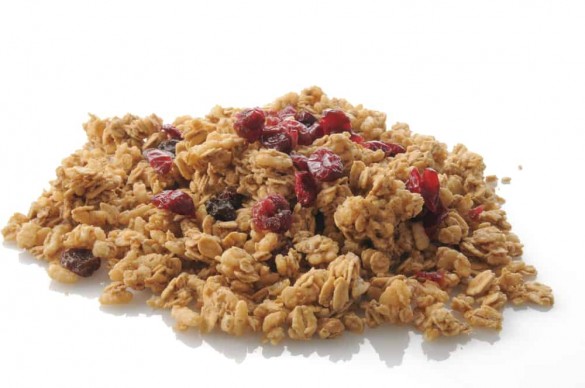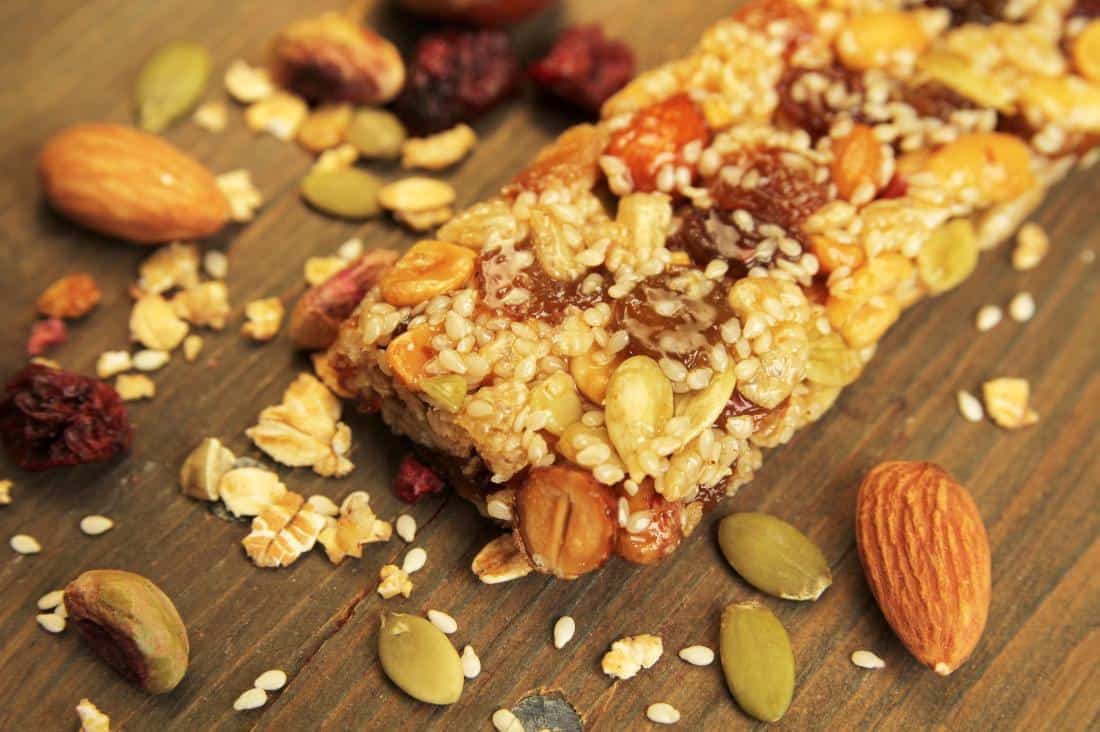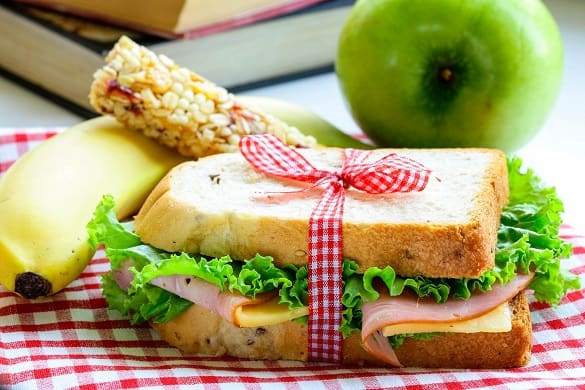Often, Granola is thought of as a health food—but is this tasty treat doing your waistline any favors? Is granola healthy? Today, we will talk about what is granola, how healthy is granola in reality, and what you should be looking for before you add it to your daily diet plan.
What Is Granola?

If you ever saw granola-based recipes and wondered what is granola and what can it do for your health, here is the expert answer:
As a breakfast cereal, granola represents a mixture of toasted rolled oats, nuts, and a sweetener like sugar or honey, though it can also include other grains, puffed rice, dried fruit, seeds, spices, and nut butter.
Historically speaking, the granola cereal is nothing new. It’s been around for well over one hundred years and was originally part of a healthy, nutritious diet.
In the 1960s, granola saw a boost in popularity with the growth of the hippie movement. Granola began receiving attention as a modern and natural way to eat.
Fast-forward a few years, and this favorite cereal has made its way into the mainstream market. You can now find granola in just about every grocery store. It’s easy to imagine yourself grabbing for a bag of this crunchy treat just about any time you go shopping. Granola is now part of daily dietary plans for children and adults alike. Either you eat it for breakfast or you mix it in a healthy salad for lunch, granola is omnipresent.
But is granola healthy, or not?
If you’re trying to be health-conscious, you might be asking yourself this very question, especially if you are following the Plan Diet to a tee.
Keep reading to find out if you’re giving your body a healthy boost every time you munch on this delicious cereal. Or are you entirely sabotaging your diet with every crunchy bite you take?
Is Granola Healthy?

Unfortunately, not all granola is created equal. Some varieties have a place in a healthy diet, while others are merely sugar bombs that you should consider a special treat enjoyed in moderation.
By nature, granola has healthful benefits for you because its base is mainly made up of good-for-you oats and nuts. Eating oats is a great way to boost up your fiber and iron intake. And they are also quite filling. In just a small serving, nuts pack a ton of heart-healthy unsaturated fat and even have a little protein. For this reason, you will find nuts in most low-carb snack recipes for kids and adults alike.
Granola calories range drastically. Thanks to the oats and nuts, the granola cereal is naturally higher in calories than a lot of other breakfast options. But that isn’t necessarily a bad thing because it can be a satiating food that helps to keep you full for many hours.
Nutritional issues with granola start to pop up when additives begin to get thrown into the mix.
When scanning the labels of your favorite brand of granola, pay careful attention to oils, sugars, and other fillers. These sneaky ingredients can take seemingly healthy granola and morph it into something altogether different. It can turn into a bowl of cereal with a nutritional value that is much more similar to an indulgent dessert than a healthy breakfast option.
Oils
Be sure to read labels carefully when determining the types of oils that get used for specific kinds of granola.
Unsaturated fat is a vital part of a healthy diet.
- However, you want to avoid saturated fats whenever possible.
- Be on the lookout for hydrogenated oils and try to seek out healthier alternatives, such as avocado or coconut oil.
Sugars
When it comes to granola, hidden sugars can be tricky. Some manufacturers have granola recipes that get packed full of added sugars. They do this because it helps to enhance the taste of their product.
Don’t fear, though. You don’t have to sacrifice taste when trying to find a granola that has a relatively low amount of added sweeteners.
- When reading the nutritional label, be sure to check out the grams of sugar that are in each serving.
- And if possible, try to find options that contain 5 grams of sugar or less.
It’s also worth noting that added sugars can go by deceivingly healthy-sounding names.
- Read the ingredient list to find out if there is cane sugar or brown sugar.
- But also be sure to search for titles such as brown rice syrup, cane juice, and even molasses.
- Although they’re natural sources, we consider even maple syrup and honey to be added sugars. So try to keep those to a minimum as well.
If you are a beginner adventurer in the realm of ketogenic diets, remember that sugar is the enemy, no matter what shape, size, color, flavor, or origin it takes.
Fillers
It’s important to read the ingredient list to find out precisely what is in the granola that you are purchasing. Some brands have recipes with just a few ingredients. However, others get packed full of fillers and additives that you may have no idea that you are eating.
- As a rule of thumb, look for short, pronounceable food names that you are familiar with hearing.
- If you’ve never heard of a particular ingredient before, or if it sounds chemically engineered, you probably don’t want to be eating it.
If you are a fan of granola bars, you’ll want to make sure to keep all of this information in mind the next time you are filling up your shopping cart as well. Make sure to read labels because there are quite a few famous granola bars out there that have nutritional values similar to a candy bar. The same advice is valid when you also shop for protein bars for weight loss. Reading the label and trying to understand the product’s contents is crucial for a healthy life, no matter what types of foods you buy.
Calories
Calories aren’t something to be afraid of, even if most diets require you to count them even when you breathe. But you do want to keep them in mind before you pour an extra-large bowl of granola for breakfast.
Granola calories tend to be high thanks to the nuts that are in most varieties.
- When choosing granola, it’s essential to check out serving sizes.
- You may be surprised to find that a serving size of granola is usually somewhere around ¼ to 1/3 cup.
- That is considerably less than a lot of other favorite breakfast cereals.
- Granola calorie ranges tend to fall somewhere between 200 and 400 calories.
Keep this information in mind when determining a proper portion size.
Granola Serving Suggestions

Granola is somewhat calorie-dense food. So it’s usually not a good idea to have a big bowl of it every morning. Instead of viewing granola as a cereal substitute, try finding new ways to incorporate it into your diet.
For example, a little granola can go a long way when used as a topping for your favorite foods.
- Granola tastes excellent on top of yogurt, toast with peanut butter, and even warm oatmeal.
- If you like an added crunch, granola can be great when mixed into other, lighter varieties of cold breakfast cereal.
- Believe it or not, this crunchy oat cereal can even taste great on top of sweet salads and roasted vegetables.
Some granolas contain a lot of vitamins and minerals. So it can still have a place in your breakfast routine.
How to Make Homemade Granola

A fantastic way to ensure that you’re eating food that fits into your nutritional standards is to prepare recipes at home. Homemade granola is not a far-fetched idea, on the contrary. So let’s see all you need to know about it!
When making your granola, you can precisely control what you are putting into the mixture. So you don’t have to worry about reading labels to uncover hidden sugars, fats, and chemical additives.
Making your granola is relatively easy and cost-effective.
- Most recipes suggest that you combine rolled oats, nuts, seeds, dried fruit, spices (such as cinnamon and nutmeg), and a few sweeteners like honey or maple syrup.
- Then, just mix all of the ingredients, spread on a cookie sheet, and bake in the oven for about 15 minutes.
Even when making homemade granola, be sure to watch your serving sizes.
The Health Benefits of Granola

An aspect that draws many people to granola is its convenience. It’s easy to pack and take with you. And it’s quick to eat without a ton of cleanup.
- Granola is also an excellent source of carbohydrates, so it is often a great snack to take with you if you plan on a day full of exercise.
- The protein boost from the nuts can also help to keep your muscles healthy and can help you to feel fuller longer.
If you’re looking for a snack that has a high-caloric intake for a quick burst of energy, then granola may be a great option.
- For this same reason, though, experts often suggest that people who are trying to lose weight should seek out breakfast and snack choices that are lower in calories.
Whole fruits and nut butter are great alternatives to granola. You can eat virtually the same amount of calories with an apple with peanut butter. That will help to satisfy cravings for creamy and crunchy food. It can also trick your brain into feeling that it has eaten a lot more than just how it would feel after 1/3 cup of crunchy cereal.
Granola: Frequently Asked Questions
Before we draw the conclusion of this article, let’s answer some of the most frequently asked questions people have about granola.
Is granola good for weight loss?
The oats in granola pack a big punch when it comes to iron and fibers, which are always welcome in a weight loss diet. Moreover, the nuts and seeds in granola come with heart-healthy unsaturated fats and protein. So far, a cup of dry granola equals in calories four cups of oats and fruits.
However, one of the reasons nutritionists only recommend moderate quantities of granola for weight loss is that store-bought granola is chock full of sugars, oils, and additives you do not want anywhere near your diet plan, especially if you are on a carb-cycling diet and count carbs like there’s no tomorrow.
What is the healthiest granola to buy?
Some healthy granola varieties you can buy contain as little oils, sugars, chemicals, fillers, and other additives as possible. The healthiest granola is homemade granola, however. It may not taste as delicious as the one you buy, but it will also lack all the substances that might hurt your health or ruin your diet plans.
Is granola healthier than cereals are?
Not necessarily. Granola makes an excellent snack if you sprinkle it on top of other foods – like a salad – but if you eat from a bowl, keep in mind that store-bought granola contains plenty of sugars. If you buy sugar-free cereal, you will avoid this issue altogether. In other words, buy granola with the least amount of sugar you can.
In Conclusion: Is Granola Healthy?

Did we decide yet whether granola is healthy or not?
Granola can have a place in a healthy diet. But as a consumer, you have to keep calories and ingredient lists in mind. A lot of famous granola brands aren’t a nutritious option and are better to think of as an indulgent treat.
Often, we consider granola health food. And it’s important to note that this shouldn’t always be the case. Some of these cereals are full of added sugars and oils that are high in saturated fats—things that you should eat sparingly. If you love the crunch of granola, consider using it as a topping for lunch or dinner recipes, instead of eating it by the bowl.
Making your granola can also help to boost up the nutritional value and keep you in control of the ingredients that you are putting into your body. Overall, granola may not necessarily be making any lists for top health food choices, but it can indeed get incorporated into just about any diet.
* YourShapeYourLife.com as an Amazon Associate may earn from qualifying purchases.
